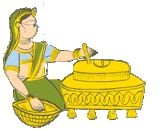Research Scholars
Smita Dalvi
Govt. Diploma in Architecture
(G.D. ARCH.) from
Academy of Architecture, Mumbai
Master of Technology (M.Tech), from IIT Delhi
P.G. Diploma in Indian Aesthetics, from Mumbai University
Email: smita.dalvi[at]gmail.com
Architecture of Domesticity in Hindi Cinema: Unravelling semiotic codes of filmic place-making
Supervisor: Prof. Nina Sabnani
The dissertation aims to study architecture of domesticity in Hindi cinema, its nature of place-making to further an understanding of the discipline of architecture by exploring connections with another art form. The architectural mise-en-scene of domestic spaces in Hindi cinema, a popular cultural medium may reveal potential indicators of domesticity. It's study will help explore the connections between architectural and cinematic perspectives on the notion of 'home space'.
Cinematic spaces narrativise architecture and offer an exciting location to seek its lived in experience. The designing of such spaces is integral to the visual design of a film and perform a vital role in creating a sense of place within the narrative. It is aimed to read film architecture as a visual text consisting of a system of visual signs and how they become sites of making and communicating meanings in a social or cultural context.
Saurabh Singanapalli
MA (English M&C) CIEFL, Hyderabad
Email: saurabhz[at]iitb.ac.in
Images in the Writing Classroom
Supervisor: Prof. Nina Sabnani
The objective of this study is to analyze print materials that use images, either as standalone compositions or as part of a sequence, and to examine their possibilities and impact on the English language writing classroom. These materials include picture books, comics, single images, cuttings from newspapers and magazines, and printed photographs. The study will also involve a study of the models of teaching writing currently employed in schools, and where such materials may fit into said models. What role do images have as materials in the writing classroom, either as prompts, or models, or even as part of the final output? Since the output is words (text), can images still play a role in fostering creativity in writing, and in getting learners more involved and motivated in the writing classroom? These are some of the questions that the study intends to explore. In addition, the relationship between words and images is one of the key facets that this study will focus on, while exploring these issues.
The type of writing that this study will look at is narrative/creative writing, and the target age group is students in class 8-9 (13-14 years of age).
